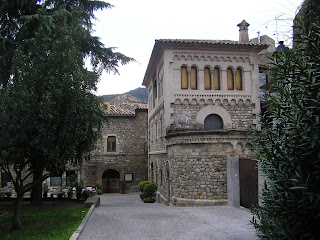It always amazes me that so many Brits move to
Spain for the weather. No one from
California would. The weather anywhere
in California (except maybe the Mojave desert) is much better than here, and especially
in the San Francisco Bay Area which once was my home. Here it is hotter (and very humid) in the
summer and colder in the winter. And
don’t expect to find natural gas service unless you move to a city or
town. Many villages don’t have city gas
and none of the rural areas do.
It doesn’t rain much and only snows in the
mountains. What is nice in this area is
that the Pyrenees are close by, you only have to go for a walk to see
snow-covered mountains, and you don’t have to shovel it. This suits me just fine.
At least now that I live in an apartment instead
of the lovely villa that had a pool but no insulation and no central heating
(which is typical of houses in the resort areas intended only for
summer use), I can be comfortable when winter sets in. In fact, it is a real pleasure to sit in a
warm home when you know it’s cold outside.
I live in town and I have city gas.
It’s the first time since we lived in Tarragona that I’m warm at home in
the winter. I have a small apartment and a radiator in every
room. And I am truly grateful.
 |
| The cats are also grateful |








































